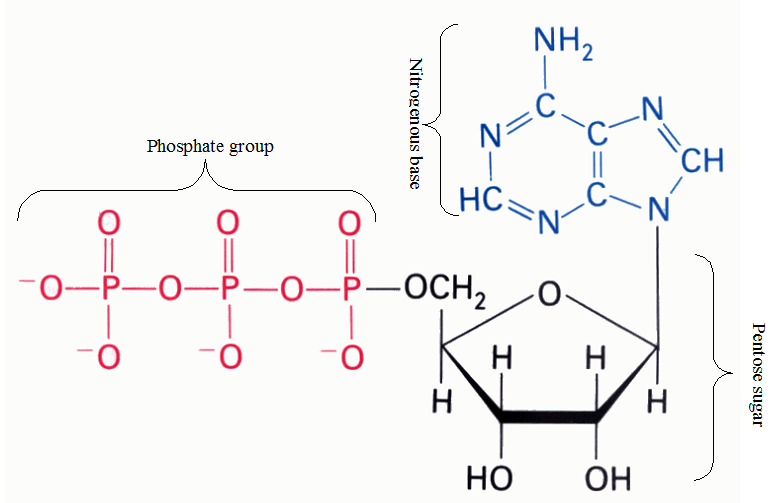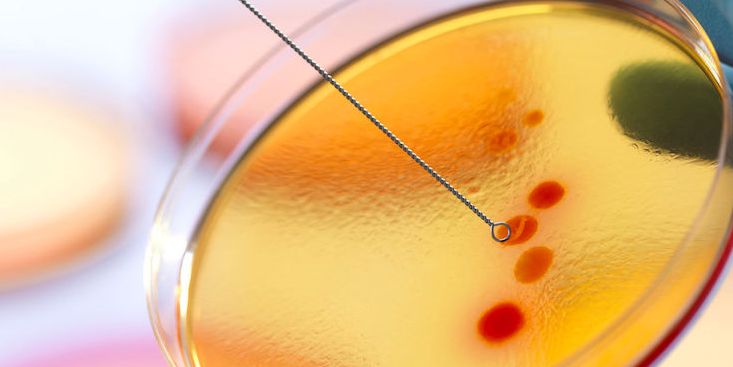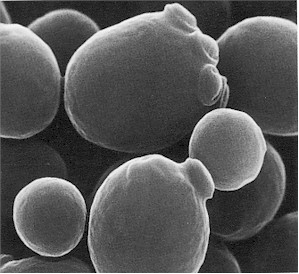Microorganisms, including bacteria, fungi, and actinomycetes, are among nature’s most prolific chemists. They are capable of synthesizing an impressive array of chemical compounds, known as microbial metabolites, through their metabolic processes. These metabolites are the biochemical products generated during microbial growth and activity and can broadly be classified into two major categories: primary metabolites and secondary metabolites.
Microbial metabolites are essential not only for the physiological needs of the microorganisms that produce them but also for their immense applications in industrial microbiology, biotechnology, pharmaceuticals, agriculture, and environmental management. The synthesis of these metabolites takes place through complex biosynthetic and degradative pathways, usually optimized and manipulated in industrial settings to enhance productivity and yield.
Microorganisms have evolved sophisticated metabolic networks that allow them to efficiently convert simple substrates into more complex molecules. These networks not only support microbial life but also lead to the formation of compounds that may serve ecological, defensive, or competitive purposes. These compounds are often recovered at the end of fermentation processes—a method widely used in industrial microbiology for large-scale metabolite production.
Understanding the distinction between primary and secondary metabolites, their biosynthetic origins, physiological functions, and commercial significance is fundamental for exploring and exploiting microbial resources in biotechnology. This text elaborates on the two major types of microbial metabolites, their characteristics, examples, and significance.
MICROBIAL METABOLISM AND THE ORIGIN OF METABOLITES
The term metabolism refers to the sum of all biochemical reactions occurring within a living cell. These reactions are generally categorized into two major types: catabolism (the breakdown of complex molecules into simpler ones with the release of energy) and anabolism (the synthesis of complex molecules from simpler ones, usually requiring energy). Microbial metabolism encompasses both of these processes.
Metabolites are the intermediate or end products of these metabolic pathways. While some are directly involved in growth and reproduction (primary metabolites), others are produced as by-products and often function in ecological interactions or survival strategies (secondary metabolites).
Industrial microbiology exploits both primary and secondary metabolites for various applications, ranging from the production of ethanol and amino acids to antibiotics and immunosuppressive drugs. The success of microbial fermentation technology is largely dependent on understanding how and when these metabolites are produced.
PRIMARY METABOLITES
Definition and Characteristics
Primary metabolites are organic compounds that are produced during the active growth phase of microorganisms—typically in the logarithmic (exponential) phase—when cell division is rapid, and biomass increases significantly. These metabolites are directly involved in vital physiological processes such as cell structure formation, energy metabolism, and nucleic acid and protein synthesis. In essence, they are indispensable for the normal growth, development, and reproduction of the microorganism.
Biochemical Pathways Involved
The biosynthesis of primary metabolites in microorganisms is driven by a set of fundamental and highly conserved metabolic pathways. These pathways are crucial not only for the generation of energy but also for the synthesis of essential cellular components such as nucleotides, amino acids, and lipids. The key biochemical pathways involved include:
- Glycolysis (Embden-Meyerhof-Parnas Pathway): This is one of the most central pathways in microbial metabolism. Glycolysis involves the enzymatic breakdown of glucose into two molecules of pyruvate, accompanied by the production of adenosine triphosphate (ATP) and reduced nicotinamide adenine dinucleotide (NADH). It occurs in the cytoplasm of cells and provides both energy and intermediates for other metabolic processes.
- Pentose Phosphate Pathway (PPP): Also known as the hexose monophosphate shunt, the PPP serves two primary functions: the production of NADPH and the generation of ribose-5-phosphate. NADPH is essential for reductive biosynthetic reactions such as fatty acid and nucleotide synthesis, while ribose-5-phosphate is a key precursor for nucleotide and nucleic acid biosynthesis.
- Tricarboxylic Acid (TCA) Cycle or Krebs Cycle: This cyclic pathway operates in the mitochondria (in eukaryotes) or cytosol (in prokaryotes) and plays a major role in energy metabolism. It produces high-energy molecules such as NADH and FADH₂, which feed into the electron transport chain for ATP synthesis. Additionally, it generates precursor metabolites needed for the biosynthesis of various amino acids and other primary metabolites.
- Entner-Doudoroff Pathway: This is an alternative to glycolysis used by certain bacteria, including Pseudomonas and Zymomonas species. It converts glucose into pyruvate and glyceraldehyde-3-phosphate, producing ATP and NADPH. This pathway is especially important in organisms lacking a complete glycolytic pathway.
Collectively, these pathways form the biochemical backbone for microbial growth, development, and reproduction, facilitating the synthesis of primary metabolites essential for cellular function. These interconnected pathways ensure that microorganisms can extract energy from substrates and channel intermediates toward the synthesis of cellular components.
Functions of Primary Metabolites
Primary metabolites are indispensable for the growth, survival, and reproduction of microorganisms. They serve as the foundational molecules that drive the essential physiological and biochemical activities within microbial cells. These compounds are typically produced during the exponential (log) phase of microbial growth and directly support core cellular processes. The major functions of primary metabolites include:
- Energy Production: Primary metabolites are integral to the generation of energy within the cell. Energy in the form of adenosine triphosphate (ATP) is synthesized during substrate-level phosphorylation and oxidative phosphorylation processes. Metabolic pathways such as glycolysis, the tricarboxylic acid (TCA) cycle, and the pentose phosphate pathway facilitate the breakdown of carbohydrates and other substrates to release energy necessary for cellular function.
- Biosynthesis of Macromolecules: Primary metabolites act as precursors or building blocks for the synthesis of key macromolecules like proteins, nucleic acids, lipids, and polysaccharides. For example, amino acids are essential for protein synthesis, while nucleotides are necessary for the synthesis of DNA and RNA.
- Structural Integrity: The metabolites contribute to the construction and maintenance of cellular structures such as cell walls and membranes. For instance, peptidoglycan synthesis in bacterial cell walls depends on amino acids and sugar derivatives produced during primary metabolism.
- Reproduction and Cell Division: Primary metabolites are essential for processes like DNA replication and mitosis. They provide the energy and molecular substrates required for synthesizing new cellular components during reproduction, ensuring the continuation of the microbial life cycle.
Primary metabolites are vital for sustaining microbial life by powering energy metabolism, enabling biosynthesis, maintaining cellular architecture, and facilitating reproduction.
Examples of Primary Metabolites
- Amino acids: Such as glutamate, lysine, methionine—used in protein biosynthesis. Corynebacterium glutamicum is a key industrial organism for amino acid production.
- Organic acids: Including citric acid, lactic acid, and acetic acid. For instance, Aspergillus niger is widely used in the production of citric acid.
- Alcohols: Like ethanol and butanol, often produced by yeasts such as Saccharomyces cerevisiae during fermentation.
- Enzymes: Industrial enzymes such as amylases and proteases are primary metabolites important for biotechnological applications.
- Vitamins: B-complex vitamins like riboflavin and biotin are synthesized by microbial fermentation.
- Nucleotides: Required for DNA and RNA synthesis, also useful in flavor enhancers (e.g., inosine monophosphate).
- Microbial biomass: The growth of microbial cells themselves is a form of metabolite production—used in single-cell protein production.
Industrial Importance of Primary Metabolites
Due to their predictable production patterns and consistent association with microbial growth, primary metabolites are extensively utilized in industrial microbiology. Examples include:
- Citric acid production from Aspergillus niger, used in food and beverage industries.
- Amino acid production (e.g., L-glutamate and L-lysine) for nutritional supplements and animal feed.
- Ethanol production for use in alcoholic beverages and as biofuel.
Efforts in metabolic engineering and fermentation technology aim to maximize the production of these metabolites by optimizing growth conditions, media composition, and genetic manipulation.
SECONDARY METABOLITES
Definition and Characteristics
Secondary metabolites are organic compounds produced during the stationary phase of microbial growth—when nutrients become limiting, and the cell growth rate slows or ceases. Unlike primary metabolites, secondary metabolites are not directly involved in growth, development, or reproduction. Instead, they are often involved in ecological interactions such as competition, defense, and signaling.
Secondary metabolites tend to be more structurally diverse and are often synthesized via complex biosynthetic pathways, which can include polyketide synthase (PKS), non-ribosomal peptide synthetase (NRPS), and hybrid systems. These pathways are often species-specific and may be encoded by large gene clusters.
Functions of Secondary Metabolites
Although not essential for survival under normal conditions, secondary metabolites can confer selective advantages in specific environments. Their functions include:
- Antibiotic activity: Suppressing or killing competing microorganisms (e.g., penicillin).
- Toxin production: Deter herbivores or competitors (e.g., mycotoxins).
- Pigmentation: UV protection, signaling, or camouflage.
- Quorum sensing: Regulation of microbial population behavior.
- Symbiotic interactions: In mutualistic relationships (e.g., rhizobia-legume nodulation signals).
Although secondary metabolites are not essential for microbial survival under normal growth conditions as aforesaid, they play crucial roles in enhancing the ecological fitness and competitiveness of microorganisms in specific or stressful environments. These compounds often serve as chemical tools or signals that allow microorganisms to interact with other organisms and adapt to fluctuating ecological niches. One of the most prominent functions of secondary metabolites is antibiotic activity, where they suppress or kill competing microbes, as seen in the production of penicillin by Penicillium species. This provides a survival advantage by reducing competition for limited resources.
Additionally, toxin production serves as a chemical defense mechanism. Microorganisms produce toxic compounds such as mycotoxins to deter predators, inhibit competitors, or manipulate host organisms. Pigmentation is another important role of secondary metabolites; pigments not only protect microbial cells from harmful ultraviolet (UV) radiation but also serve in camouflage, species recognition, or signaling functions.
Quorum sensing, a process by which bacteria coordinate group behaviors based on population density, often involves the use of secondary metabolites as signaling molecules. These interactions regulate biofilm formation, virulence, and motility. Furthermore, secondary metabolites play key roles in symbiotic interactions, such as in the rhizobia-legume association, where signaling molecules (like nod factors) help establish nitrogen-fixing root nodules.
While secondary metabolites are not required for basic survival, they provide microorganisms with adaptive strategies that enhance survival, competitiveness, and communication in complex ecological systems.
Examples of Secondary Metabolites
- Antibiotics: Such as penicillin (from Penicillium), streptomycin (from Streptomyces), erythromycin, chloramphenicol, and tetracycline.
- Pigments: Carotenoids, melanin, and prodigiosin, used in cosmetics, textiles, and as antioxidants.
- Alkaloids: Nitrogen-containing compounds with pharmacological activity, including ergot alkaloids and cyclosporine.
- Toxins: Mycotoxins (e.g., aflatoxins from Aspergillus flavus) are harmful secondary metabolites.
- Steroids: Such as corticosteroids and anabolic steroids derived from microbial transformation processes.
- Siderophores: Iron-chelating compounds that help microorganisms acquire iron from the environment.
- Immunosuppressants: Such as cyclosporine, used in organ transplant patients.
Industrial Importance of Secondary Metabolites
Secondary metabolites have been instrumental in the development of modern medicine and biotechnology. Their commercial value is immense due to their wide applications:
- Pharmaceuticals: The discovery of antibiotics revolutionized medicine. Drugs like penicillin, streptomycin, and tetracycline are crucial in treating bacterial infections.
- Anticancer agents: Certain microbial secondary metabolites like doxorubicin are used in chemotherapy.
- Immunosuppressive agents: Cyclosporine and tacrolimus are used in preventing organ transplant rejection.
- Agrochemicals: Some secondary metabolites serve as natural pesticides or plant growth regulators.
- Pigments and dyes: Used in food, textiles, and cosmetics.
- Biocontrol agents: Certain metabolites inhibit the growth of plant pathogens, reducing reliance on chemical pesticides.
Regulation of Secondary Metabolite Production
Secondary metabolite biosynthesis is tightly regulated and often influenced by environmental factors such as:
- Nutrient limitation: Scarcity of carbon, nitrogen, or phosphorus can trigger secondary metabolism.
- pH and temperature: Can affect enzyme activities in biosynthetic pathways.
- Oxygen availability: Aerobic versus anaerobic conditions influence metabolite profiles.
- Population density: Quorum sensing mechanisms may activate secondary metabolism.
Because of this complexity, industrial production of secondary metabolites requires precise control of fermentation conditions. Strain improvement through genetic engineering and mutagenesis is also widely employed to enhance metabolite yields.
COMPARISON OF PRIMARY AND SECONDARY METABOLITES
| Feature | Primary Metabolites | Secondary Metabolites |
| Growth Phase | Exponential (log) phase | Stationary phase |
| Function | Direct role in growth, reproduction, and development | No direct role in growth; involved in ecological functions |
| Universality | Common to many organisms | Often species-specific |
| Pathway | Central metabolic pathways | Specialized biosynthetic pathways |
| Examples | Amino acids, ethanol, citric acid, vitamins | Antibiotics, pigments, toxins, alkaloids |
| Industrial Use | Food, feed, biofuels, supplements | Pharmaceuticals, agrochemicals, dyes |
| Regulation | Growth-associated | Non-growth associated, complex regulation |
| Production Timing | During active growth | After growth slows or ceases |
APPLICATIONS IN INDUSTRY AND BIOTECHNOLOGY
Microbial metabolites—both primary and secondary—have immense significance in various sectors, ranging from healthcare to agriculture, food production, and environmental management. These biochemical compounds produced by microorganisms have been harnessed through advanced fermentation and biotechnological processes for a wide range of commercial and industrial uses.
- Pharmaceutical Industry
One of the most important applications of microbial metabolites is in the pharmaceutical industry. Many of the most effective drugs in use today are derived from microbial secondary metabolites. Antibiotics such as penicillin, streptomycin, erythromycin, and tetracycline, produced by fungi and actinomycetes, have revolutionized medicine and are vital for combating bacterial infections. In addition to antibiotics, microbial metabolites are used to produce antifungals (e.g., griseofulvin), antivirals, and antiparasitic agents. Secondary metabolites are also used in oncology; for example, doxorubicin and actinomycin D—produced by Streptomyces species—are employed in cancer chemotherapy. Immunosuppressants like cyclosporine, produced by Tolypocladium inflatum, are crucial for organ transplantation. The discovery and production of such drugs continue to rely heavily on microbial sources and metabolic engineering.
- Food Industry
Microbial metabolites play an integral role in the food and beverage industry. Primary metabolites such as lactic acid, acetic acid, citric acid, and ethanol are commonly used as preservatives, flavor enhancers, and acidulants. Microbial amino acids, like glutamic acid, serve as flavor enhancers in products such as monosodium glutamate (MSG). Enzymes such as amylases, proteases, lipases, and cellulases are produced through microbial fermentation and are used to break down complex molecules during food processing, baking, brewing, and dairy production. Vitamins like riboflavin (B2), produced by Ashbya gossypii, are also added to fortified foods and supplements.
- Agriculture
In the agricultural sector, microbial metabolites have increasingly replaced chemical agents due to their eco-friendly and sustainable characteristics. Secondary metabolites are used to develop biopesticides, which are safer alternatives to synthetic pesticides. Certain microbial metabolites promote plant growth directly by acting as phytohormones or indirectly by suppressing plant pathogens. Biofertilizers derived from nitrogen-fixing bacteria (e.g., Rhizobium, Azotobacter) and phosphate-solubilizing microorganisms improve soil fertility and crop yield. Some actinomycetes also produce antifungal compounds that protect plants from root diseases.
- Environmental Biotechnology
Microbial metabolites also have applications in environmental sustainability through bioremediation—the use of microorganisms to degrade environmental pollutants. Some bacteria and fungi produce metabolites that can detoxify heavy metals, hydrocarbons, and pesticides. In wastewater treatment, microbial enzymes help break down organic waste, facilitating more efficient processing in sewage treatment plants. These processes contribute to pollution control and environmental conservation.
- Energy Production
In the energy sector, microbial metabolites are central to the production of biofuels. Ethanol and butanol, produced by yeast and certain Clostridia, are commonly used as renewable fuel sources. Methane production through anaerobic digestion by methanogens is another important energy-related application, especially in the generation of biogas.
- Cosmetics and Personal Care
Microbial metabolites are also increasingly used in the cosmetics industry. Pigments like carotenoids and melanin, produced by various microbes, are used as natural colorants in skincare products. Other metabolites, such as biosurfactants and polyhydroxyalkanoates, are used for their emulsifying and moisturizing properties. Vitamins such as B-complex and vitamin E derived from microbial fermentation are added to personal care formulations for skin and hair health.
Microbial metabolites provide a sustainable and efficient foundation for innovation across multiple industries. Their diverse applications are continually expanding with advances in microbial biotechnology and synthetic biology, opening up new possibilities for sustainable development and human well-being.
FUTURE PERSPECTIVES AND CONCLUSION
Advancements in genomics, proteomics, and metabolomics have expanded our understanding of microbial metabolism, allowing for the discovery of novel metabolites and the improvement of production systems. Metabolic engineering, synthetic biology, and CRISPR technologies offer powerful tools to manipulate microbial metabolic pathways for enhanced yield, efficiency, and discovery of new bioactive compounds.
The distinction between primary and secondary metabolites is not always absolute. Some compounds may serve dual functions or have intermediary classifications, especially under different environmental conditions or in engineered strains.
In conclusion, microbial metabolites—both primary and secondary—represent a treasure trove of biological and industrial potential. Their biosynthesis reflects the remarkable adaptability and complexity of microbial life. Continued research and innovation in this field hold the promise of solving pressing global challenges in health, agriculture, and sustainability.
References
Bader F.G (1992). Evolution in fermentation facility design from antibiotics to recombinant proteins in Harnessing Biotechnology for the 21st century (eds. Ladisch, M.R. and Bose, A.) American Chemical Society, Washington DC. Pp. 228–231.
Nduka Okafor (2007). Modern industrial microbiology and biotechnology. First edition. Science Publishers, New Hampshire, USA.
Das H.K (2008). Textbook of Biotechnology. Third edition. Wiley-India ltd., New Delhi, India.
Latha C.D.S and Rao D.B (2007). Microbial Biotechnology. First edition. Discovery Publishing House (DPH), Darya Ganj, New Delhi, India.
Nester E.W, Anderson D.G, Roberts C.E and Nester M.T (2009). Microbiology: A Human Perspective. Sixth edition. McGraw-Hill Companies, Inc, New York, USA.
Steele D.B and Stowers M.D (1991). Techniques for the Selection of Industrially Important Microorganisms. Annual Review of Microbiology, 45:89-106.
Pelczar M.J Jr, Chan E.C.S, Krieg N.R (1993). Microbiology: Concepts and Applications. McGraw-Hill, USA.
Prescott L.M., Harley J.P and Klein D.A (2005). Microbiology. 6th ed. McGraw Hill Publishers, USA.
Steele D.B and Stowers M.D (1991). Techniques for the Selection of Industrially Important Microorganisms. Annual Review of Microbiology, 45:89-106.
Summers W.C (2000). History of microbiology. In Encyclopedia of microbiology, vol. 2, J. Lederberg, editor, 677–97. San Diego: Academic Press.
Talaro, Kathleen P (2005). Foundations in Microbiology. 5th edition. McGraw-Hill Companies Inc., New York, USA.
Thakur I.S (2010). Industrial Biotechnology: Problems and Remedies. First edition. I.K. International Pvt. Ltd. New Delhi, India.
Discover more from Microbiology Class
Subscribe to get the latest posts sent to your email.





